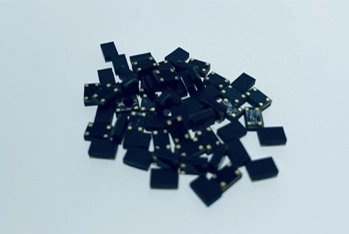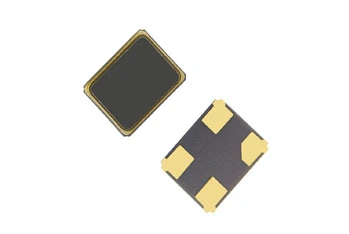en

Quartz crystal is a piezoelectric material widely used in electronic devices for its ability to generate precise oscillations. When subjected to an electric field, it vibrates at a stable frequency, making it essential for applications like clocks, radios, and microprocessors, where accurate timing is crucial.
A quartz crystal works based on its piezoelectric properties, which allow it to convert electrical energy into mechanical vibrations and vice versa. When an alternating electric field is applied to the crystal, it induces mechanical stress, causing the crystal to vibrate at a specific, stable frequency. This frequency is determined by the crystal’s physical dimensions and the cut of the quartz.
The process begins with the application of an electric signal to the crystal via electrodes attached to its surface. The crystal then oscillates at its natural resonant frequency, generating a precise and stable oscillation. These oscillations can be harnessed to produce a consistent timing signal.
In electronic circuits, quartz crystals are often used in oscillators to provide a stable clock signal for microprocessors, communication systems, and other timing-sensitive applications. The high stability and low drift of quartz crystals make them ideal for maintaining accurate time and frequency control, even under varying environmental conditions.
The performance of a quartz crystal can be influenced by several factors, which can impact its frequency stability and overall reliability:
Temperature: Temperature variations can cause the crystal to expand or contract, leading to changes in its resonant frequency. While quartz crystals are designed to minimize these effects, extreme temperatures can still cause frequency drift.
Aging: Over time, the physical properties of the quartz crystal can change due to internal stress relaxation and minor impurities. This aging process can lead to gradual frequency shifts.
Mechanical Stress: External mechanical forces, such as vibrations or shocks, can alter the crystal’s structure, affecting its oscillation frequency. Proper mounting and packaging can mitigate these effects.
Contamination: Dust, moisture, and other contaminants can affect the crystal’s surface and its electrical properties, leading to performance degradation. Hermetic sealing is often used to protect the crystal.
Load Capacitance: The external load capacitance connected to the crystal can influence its oscillation frequency. Variations in this capacitance can cause frequency shifts.
Drive Level: The electrical power applied to the crystal, known as the drive level, can affect its performance. Excessive drive levels can cause non-linear behavior and frequency instability.
Understanding and controlling these factors are crucial for ensuring the long-term stability and accuracy of quartz crystals in various applications.
Quartz is preferred for oscillators because of its excellent frequency stability, low cost, and availability. Its piezoelectric properties allow it to maintain a consistent oscillation frequency over a wide range of temperatures and conditions.
Quartz crystals are commonly used in clocks, watches, radios, microprocessors, and communication systems. They provide precise timing and frequency control, making them essential in various electronic devices and systems.




